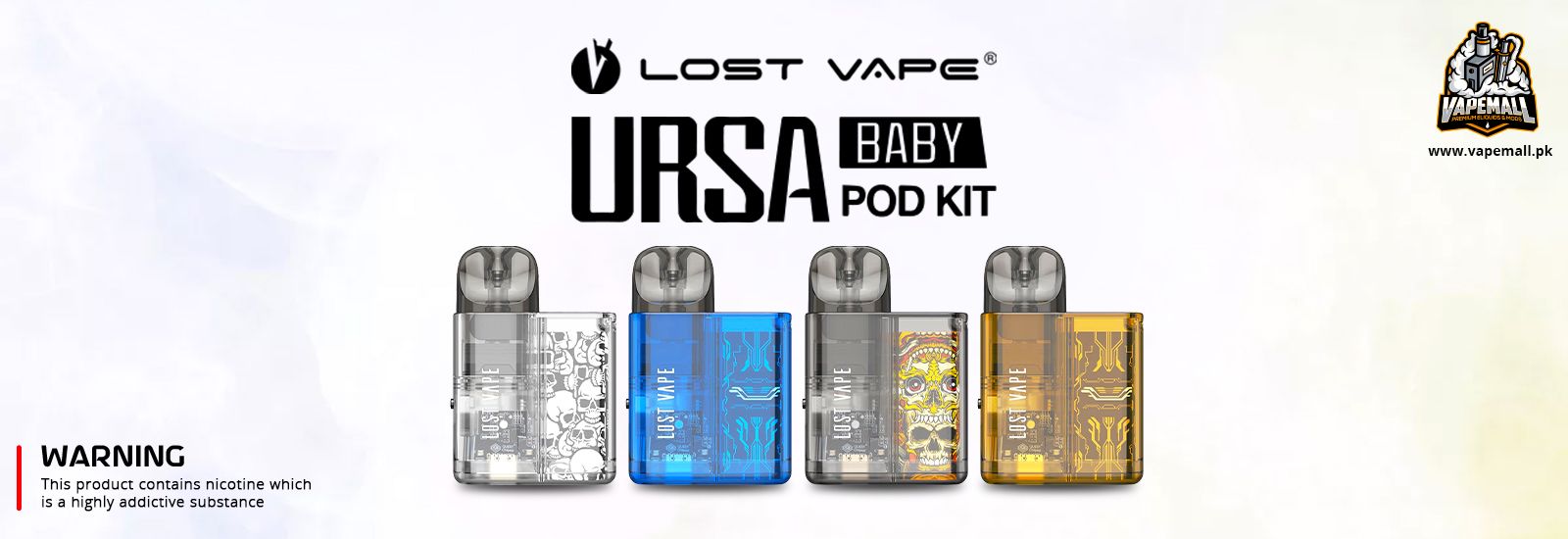Electronic Cigarette: How Does It Work? Health Effects

The electronic cigarette (or e-cigarette ) is a device designed to simulate and replace traditional systems that allow smoking tobacco derivatives, such as cigarettes or cigars, both in their use and appearance.
Like their conventional counterparts, e-cigarettes can contain a variable amount of nicotine , which is vaporized in a mixture typically made up of water, propylene glycol , glycerol, and other chemicals. Each device contains an electronic vaporizer (atomizer), rechargeable batteries, electronic controls, and cartridges containing the liquid being vaporized. The manufacturers of electronic cigarettes report that the cartridges generally contain between 6 and 24 mg of nicotine, or they can be deprive and release only a flavored vapors .
This is how electronic cigarettes work : the atomizer heats a liquid solution containing - depending on the model - variable percentages of nicotine or without it, aromas and other chemical products. As a result of the heat, this mixture is transformed into vapor which, once inhaled by the user, allows one to experience a sensation similar to that associated with the use of cigarettes or other traditional methods of smoking tobacco.
Since there is no combustion during the use of the electronic cigarette, the residues due to this process are missing ( tar , polycyclic aromatic hydrocarbons , etc.); from this point of view, e-cigarettes are probably safer than traditional products used to inhale smoke.

The electronic cigarette is a device that allows you to inhale vapor, usually flavored and containing variable quantities of nicotine (some models do not have it), and introduce it into the respiratory system , without any combustion of the tobacco and the related damages.
The electronic cigarette can be useful for promoting smoking cessation , with the possibility of preventing thousands of cases of cancer every year, as it allows you to avoid the tar and the many toxic gases contained in pipes, cigars and cigarettes , exposing you to more limited risks. However, it has yet to be established with certainty how effective and if it is as a tool to control nicotine addiction and, above all, the correct use of the electronic cigarette is implied to achieve this goal.
E-cigarette (often abbreviated to " e-cig ") and the neologism " vape " are synonyms used to refer to the device and its use.
What's in it?
Components of the Electronic Cigarette
E-cigarettes come in different sizes and shapes that often mimic conventional cigarettes. Common e-cigarette components include: a liquid solution , a cartridge , an atomizer (vaporizer and cartomizer), and a power source(rechargeable battery and internal electronic circuit). Many e-cigarettes are made up of replaceable parts, while single-use devices combine all the components into a single part that is discarded when the e-liquid runs out. The refill packs of the cartridges vary in price according to the quantity of nicotine declared. Some models contain no nicotine, just a flavored vapor.
Cartridge
Generally, the e-cigarette cartridge serves as both an e-liquid reservoir and a filter . The solution contained in it can be formulated with different concentrations of nicotine (high, medium, low or absent) in a mixture composed of water, propylene glycol, glycerol and other substances, including flavorings that simulate the taste of tobacco or reproduce a wide range of flavors (example: mint , vanilla , chocolate , tobacco, fruit, etc.).
The Pod of the e-cigarette is designed to allow the liquid to pass into the atomizer and the vapor to the user's mouth. When the liquid runs out, users can refill or replace the Pod Vape. One refill is equivalent to around 7-25 regular cigarettes, depending on the nicotine content, but how long it lasts obviously depends on how you use the Pod Vape.

Atomizer
The atomizer is the central component of the electronic cigarette. It generally consists of a small heating element responsible for vaporizing the liquid.
Power of the Electronic Cigarette
Most portable vaping devices contain a rechargeable battery, which tends to be the largest component of an e-cigarette. The battery may contain an electronic flow sensor that is activated simply by inhaling through the device, while other models use a power button that must be held during operation. An LED may also be employed to indicate activation. Some manufacturers also offer a portable cigarette pack-shaped refill that holds a larger battery.
Accessories
Depending on the type, the electronic cigarette can have additional functions and the support of a wide range of internal batteries, accessories and atomizers.
How does it work?
Smoke Electronic Cigarette: how to use
• The user inhales through the filter of the e-cigarette.
• The airflow activates a sensor in the battery, which is thus activated.
• The vaporizer heats the liquid solution contained in the cartridge. At the same time, a LED is activated at the end of the electronic cigarette, to simulate the color of the combustion of a conventional device.
• The user gets a puff of hot gas, inhaled like tobacco smoke.
• During exhalation, the vapor, thanks to the presence of propylene glycol (PEG), simulates the visual sensation obtained by smoking traditional cigarettes. The vapor emitted by the e-cigarette dissipates quickly.

Electronic cigarette to quit smoking
For those who intend to quit smoking , the correct approach to electronic cigarettes includes the following "rules":
• Quickly remove all traditional cigarettes and do not use both;
• Be aware that the e-cig is a temporary support and not a substitute for cigarettes;
• Gradually reduce the nicotine contained in the liquid until it is removed within 4-6 months;
• Finally, reduce the use of the e-cigarette itself until it is eliminated.
Clearly, there are other strategies that can be used in combination or as an alternative to the electronic cigarette to quit smoking, such as specific drug therapies and short counseling sessions combined with a balanced diet and regular physical activity .
Health Effects
Alleged benefits of the Electronic Cigarette
E-cigarettes are often advertised as tobacco substitutes and alternatives or as smoking cessation devices. The practice of inhaling the vapor from the electronic cigarette provides not only the nicotine that the body that has developed addiction feels the need for, but also a tactile, olfactory and gustatory experience that recalls that of the cigarette.
The different marketing strategies related to the e-cigarette focus on different points:
• For smokers who don't intend to stop smoking tobacco, the electronic cigarette represents a way to be able to "smoke" even in environments where there is a ban on conventional smoking, such as airplanes, restaurants and workplaces.
• For smokers who don't want to give up their nicotine addiction, some studies suggest that switching to e-cigarettes reduces the potential harm attributable to their habit.
• For people who want to quit, some suggest that e-cigarettes can help with the transition from smokers to non-smokers.
However, any health benefits associated with these claims are based on inaccurate, incomplete or misleading information. Since July 2013, the World Health Organization has taken a stand on the matter, stating that no rigorous studies have yet been conducted to determine whether e-cigarettes are actually effective in helping people quit smoking . In August 2014, the World Health Organization called on governments to ban the sale of e-cigarettes to minors, warning that vulnerable categories to the effects of their use are children and adolescents, pregnant women (for the fetus) and in reproductive age.
Additionally, the Food and Drug Administration ( FDA ) questioned the safety of these products after detecting different amounts of nicotine than stated, and traces of toxic chemicals including known carcinogens (such as nitrosamines) in samples of two very popular brands. This prompted the FDA to issue a warning about the potential health risks associated with e-cigarettes.
When e-cigarettes are used as smoking cessation aids , they are intended to deliver nicotine, inhaled , directly to the lungs. However, none of the other regulated and recognized smoking cessation products, such as nicotine patches and chewing gum, deliver it by other routes of administration. Furthermore, the biological mechanism by which smoking cessation can be achieved using the e-cigarette remains to be defined with certainty. Added to this is the consideration that, although the artificial "smoke" of e-cigarettes appears to contain fewer toxins than those present in traditional cigarette smoke, the long-term health impact has yet to be investigated.
Additionally, these products contain no health warnings comparable to FDA-approved nicotine replacement products or conventional cigarettes. Healthcare professionals are encouraged to recommend conventional nicotine replacement therapies, but for patients unwilling to use or continue with such methods, they could present e-cigarettes as an option to curb smoking.
Electronic Cigarette: is it safe to use?
Since e-cigarettes do not generate smoke from burning tobacco, their use is commonly believed to be safer by consumers. However, the chemicals used in e-cigarettes have not been fully researched and regulated.
Testing some of these products suggests the presence of toxic chemicals . A preliminary analysis by the FDA's Division of Pharmaceutical Analysis analyzed the ingredients in a small sample of cartridges from two leading e-cigarette brands. In one sample, FDA analysis found diethylene glycol, a chemical toxic to humans, typically used as an additive to antifreeze fluids. In several other samples, FDA analyzes have found carcinogens , including tobacco-specific nitrosamines ( TSNAs ) and formaldehyde.. Finally, the analyzes have found nicotine in some cartridges declared free from the substance. Consignments of e-cigarette refills containing benzene have been intercepted . Acrolein , toluene, heavy metals (such as nickel, copper, zinc , tin, and lead ) , and acetaldehyde are other reported substances of concern. Some scientific studies have also shown that aromas inhaled at high concentrations exert irritating and inflammatory effects on the mucous membrane of the respiratory tract.
In the future, it is presumable that - thanks to regulation and strict surveillance of production processes, together with the use of chemicals and materials that are safer for consumer health - electronic cigarettes will become an increasingly safer alternative to tobacco smoke. In the meantime, it is a good general rule: be wary of cheaper products and avoid purchasing electronic cigarettes and/or refills through risky channels (marketplaces, suspicious websites, etc.) You can get the best Vape price on Vapemall.pk
Appreciate the creator